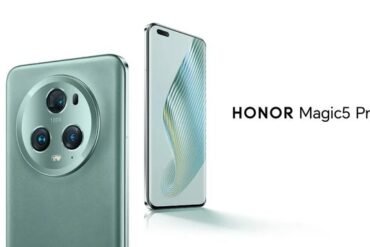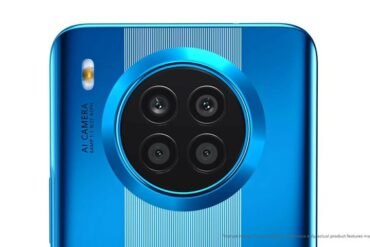Graphics Card VRAM Speed: GDDR6 vs. GDDR5X
Table of Contents
Introduction: Understanding Graphics Card VRAM
Graphics Card VRAM (Video Random Access Memory) plays a crucial role in determining the performance and capabilities of a graphics card. It is a dedicated memory used by the graphics processing unit (GPU) to store and access data required for rendering images and videos in real-time.
VRAM is different from the system RAM that is used by the computer’s processor. While system RAM is general-purpose memory, VRAM is specifically designed for graphics-intensive tasks. It provides faster access to data, allowing the GPU to quickly retrieve and process information required for dynamic rendering and visualization.
There are various types of VRAM available in the market, with GDDR6 and GDDR5X being two popular options. These types of VRAM differ in terms of speed, bandwidth, and performance, affecting the overall capabilities of the graphics card.
When comparing GDDR6 and GDDR5X, it is essential to understand their key differences. GDDR6 is the latest generation of VRAM, offering higher speeds and improved performance compared to its predecessor, GDDR5X.
- GDDR6 offers higher memory speeds, allowing for faster data transfer and processing.
- It has a larger memory bandwidth, enabling the GPU to access data more efficiently.
- GDDR6 is more power-efficient, resulting in better overall performance and reduced energy consumption.
- It supports higher memory capacities, providing more room for storing complex textures and graphics data.
While GDDR5X is still a capable VRAM option, GDDR6 has become the preferred choice for high-end gaming and demanding applications. Its superior speed, bandwidth, and power efficiency make it ideal for handling graphics-intensive tasks with ease.
In conclusion, understanding the importance of VRAM and the differences between GDDR6 and GDDR5X is essential for making an informed decision when selecting a graphics card. The VRAM type directly impacts the performance and capabilities of the card, and opting for the latest generation, such as GDDR6, can significantly enhance gaming and visual experiences.
Exploring GDDR6 Technology
GDDR6 (Graphics Double Data Rate 6) is the latest generation of memory technology specifically designed for graphics cards. It is a significant improvement over its predecessor, GDDR5X, offering faster speeds and improved performance. Let’s take a closer look at the key features and benefits of GDDR6 technology.
- Increased Bandwidth: GDDR6 memory provides higher memory bandwidth, allowing for faster data transfer between the GPU and memory. This results in improved overall graphics performance and smoother gameplay.
- Higher Clock Speeds: GDDR6 operates at higher clock speeds compared to GDDR5X, enabling faster data processing and rendering. This is especially beneficial for gaming enthusiasts and professionals who rely on high-performance graphics cards.
- Lower Power Consumption: Despite the increased speeds, GDDR6 consumes less power compared to GDDR5X. This is achieved through advanced power management techniques and improved efficiency, making it a more energy-efficient solution.
- Greater Memory Capacity: Graphics cards equipped with GDDR6 memory can offer larger memory capacities, allowing for more complex and detailed graphics rendering. This is particularly advantageous for gaming at higher resolutions and running demanding applications like virtual reality.
- Improved Memory Bus Width: GDDR6 features a wider memory bus compared to GDDR5X, which allows for faster data transfer and reduced latency. This leads to improved overall system performance and responsiveness.
In summary, GDDR6 technology offers a significant leap forward in terms of graphics card memory performance. With its increased bandwidth, higher clock speeds, lower power consumption, greater memory capacity, and improved memory bus width, GDDR6 is a game-changer for both gaming and professional applications. As the demand for higher quality graphics and immersive experiences continues to grow, GDDR6 paves the way for more powerful and efficient graphics cards.
Analyzing GDDR5X Performance
When it comes to graphics card VRAM speed, GDDR5X has been a popular choice for many high-performance GPUs. In this section, we will delve into the performance of GDDR5X and explore its capabilities.
GDDR5X is an improved version of the GDDR5 memory technology, offering higher memory bandwidth and increased performance. It was first introduced by NVIDIA with their Pascal architecture and has been widely used in their high-end graphics cards.
Here are some key factors to consider when analyzing GDDR5X performance:
- Memory Bandwidth: GDDR5X offers significantly higher memory bandwidth compared to its predecessor, GDDR5. This higher bandwidth allows for faster data transfer between the GPU and the VRAM, resulting in improved performance in graphics-intensive tasks such as gaming and 3D rendering.
- Clock Speed: GDDR5X operates at higher clock speeds than GDDR5, allowing for faster data access and retrieval. Higher clock speeds translate to quicker loading times and smoother gameplay, especially in graphics-intensive applications.
- Overclocking Potential: GDDR5X memory modules have shown great potential for overclocking, enabling users to push their graphics cards beyond their stock performance limits. Overclocking the GDDR5X VRAM can lead to even higher memory bandwidth and improved overall graphics card performance.
- Memory Capacity: GDDR5X can support higher memory capacities, allowing for larger VRAM sizes on graphics cards. This is particularly beneficial for gaming at higher resolutions or running demanding applications that require more memory space.
- Compatibility: GDDR5X is backward compatible with GDDR5, meaning that graphics cards with GDDR5X memory can still work with older GDDR5-equipped systems. This provides flexibility for users who may want to upgrade their graphics card without having to replace other components of their system.
In summary, GDDR5X offers significant improvements in memory bandwidth, clock speed, overclocking potential, memory capacity, and compatibility. These features make it a compelling choice for gamers and professionals seeking high-performance graphics cards. However, with the introduction of GDDR6 technology, it is essential to also consider its advantages and potential performance gains over GDDR5X.
Comparing GDDR6 and GDDR5X Speeds
When it comes to graphics card VRAM, two popular options are GDDR6 and GDDR5X. Both offer high performance and are widely used in the gaming industry. However, there are some key differences in their speeds and capabilities. Let’s take a closer look at how they compare:
- Memory Bandwidth: GDDR6 has a higher memory bandwidth compared to GDDR5X. This means that it can transfer data at a faster rate, allowing for smoother and more efficient gaming experiences.
- Data Rate: GDDR6 also has a higher data rate compared to GDDR5X. It can transfer more data per clock cycle, resulting in faster overall performance.
- Frequency: GDDR6 operates at higher frequencies than GDDR5X, allowing for faster data transfer and better overall performance. This is especially beneficial for graphics-intensive tasks such as gaming and 3D rendering.
- Power Consumption: GDDR6 is more power-efficient compared to GDDR5X. It consumes less energy while delivering higher performance, making it an attractive choice for those looking to optimize power usage.
- Overclocking Potential: GDDR6 generally has a higher overclocking potential compared to GDDR5X. This means that users can push their graphics cards to higher clock speeds, resulting in even better performance.
Overall, GDDR6 offers significant improvements in terms of speed and efficiency compared to GDDR5X. It provides higher memory bandwidth, faster data rates, and better power consumption, making it the preferred choice for gamers and professionals who require top-of-the-line graphics performance.
However, it’s important to note that the actual performance of a graphics card depends on various factors, including the GPU architecture, memory bus width, and overall system configuration. While GDDR6 is generally superior to GDDR5X, it’s always a good idea to consider other factors when choosing a graphics card for your specific needs.
Conclusion: Choosing the Right VRAM
When it comes to selecting the right VRAM for your graphics card, there are several factors to consider. Both GDDR6 and GDDR5X offer significant improvements over their predecessors, but they have their own unique characteristics that make them suitable for different applications.
If you are a casual gamer or use your graphics card for general computing tasks, GDDR5X might be a more cost-effective option. It provides a good balance between performance and price, offering high bandwidth and decent speeds that can handle most gaming needs.
However, if you are a professional gamer or engage in graphic-intensive tasks such as video editing or 3D rendering, GDDR6 would be the better choice. Its higher bandwidth and faster speeds allow for smoother gameplay and faster rendering times, resulting in a more immersive and efficient experience.
Here are some key takeaways to help you make an informed decision:
- Budget: Consider your budget and determine how much you are willing to spend on a graphics card with the desired VRAM.
- Use case: Assess your needs and the type of tasks you will be using your graphics card for. This will help determine the level of VRAM performance you require.
- Future-proofing: If you plan on keeping your graphics card for a longer period or anticipate upgrading to more demanding applications, investing in GDDR6 may provide better long-term performance.
- Compatibility: Ensure that your system supports the selected VRAM type, as some older systems may not be compatible with newer technologies.
Ultimately, the choice between GDDR6 and GDDR5X depends on your specific requirements and budget. Both types offer significant improvements over their predecessors and deliver excellent performance. By considering your needs and the factors mentioned above, you can make an informed decision and choose the right VRAM for your graphics card.

























